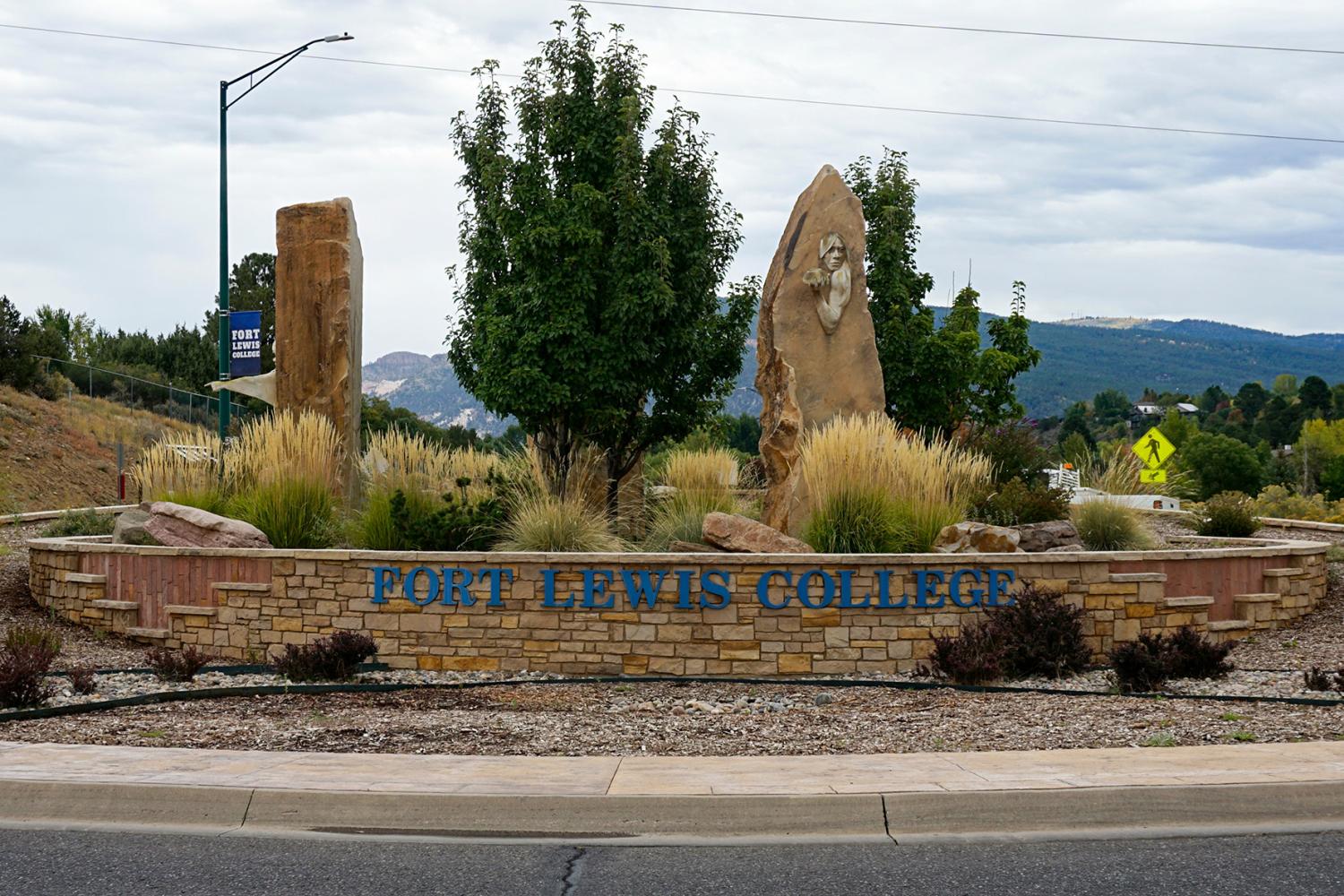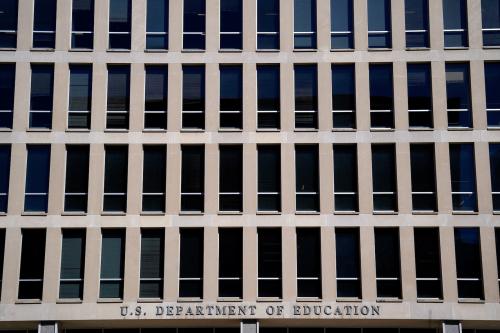Since 2010, colleges nationwide have lost nearly one-fifth of their students. This enrollment decline has strained higher education institution budgets, damped economic activity in college towns, and harmed skill development and degree completion for students.
While these national numbers are significant, they mask the fact that some students have been substantially more affected than others. American Indian and Alaska Native students (collectively referred to as “Native American” students in this piece) are among those most affected by the college enrollment decline. Native American students have seen an enrollment decline of 37% since 2010—over twice the national average.
By any measure, these numbers suggest a crisis for Native American students in higher education. Unfortunately, the challenge of measuring Native American students’ educational access and success is made even more difficult by the poor quality of higher education data.
One underreported (and widely misunderstood) piece of this puzzle is that federal measures of race and ethnicity in postsecondary education data significantly undercount the total population of Native American students. Native American students have long been undercounted and marginalized in postsecondary data collection due to factors such as insufficient sampling, lack of data on tribal affiliation, and data aggregation practices that erase Native identities. These factors make it challenging to identify trends within this population or to design effective, tailored support services. Furthermore, without good data it’s impossible for the federal government to meet its trust and treaty obligations to tribal nations and Native American people.
The good news is that in 2024, the federal government published revised federal standards for measuring race and ethnicity that would improve the inclusivity and accuracy of data on Native American students. Similar changes were introduced by the Obama administration in 2016. However, when the first Trump administration took office in 2017, it never implemented those changes.
With President Donald Trump back in office, it’s now critical that the U.S. Department of Education (ED), a federal agency created by Congress, follow through on this opportunity to enhance Native American student data collection and reporting. The collection and dissemination of higher education data are essential federal functions required by Congress. Any disruptions to these functions would hinder efforts to better understand Native American students’ experiences. This report highlights how the federal government’s proposed changes would support Native American students by adopting new approaches to disaggregating racial and ethnic data. It then offers concrete steps that ED can take to improve the quality and utility of Native American student data so that policymakers, higher education institutions, and tribal nations have the accurate information they need to better support Native American students.
Why higher education data matter for supporting tribes and Native American students
The federal government has trust and treaty responsibilities to Native American tribes and Native American people, which includes access to quality education. Rooted in legal and political precedent, the federal trust responsibility is a legal obligation in which the U.S. government commits to protect tribal sovereignty, resources, and welfare. This includes providing services necessary to support the economic, social, and educational well-being of Native American communities, ensuring their standard of living is comparable to that of non-Native society. Without accurate and detailed data on Native American students, however, the federal government faces significant challenges in fulfilling its trust responsibilities, hindering efforts to promote equity and ensure adequate support for Native American tribes and communities.
Fixing the data won’t by itself solve the underrepresentation of Native American students in higher education. There are a number of additional factors at play, including but not limited to college affordability, inequitable disparities in college access and retention, and a lack of culturally informed wraparound services, to name a few. But until data on Native American students are more accurate, accessible, and meaningful, it will prove difficult to address these issues. Better data—and better access to data—are crucial for all who care about Native American student success. Good data are critical to understanding Native American students’ needs, supporting them effectively, and working to improve their access to and persistence in higher education.
Current federal data standards on race and ethnicity systemically undercount Native American students
Current federal postsecondary data collections have three major problems that disadvantage Native American students more than other groups. First, ED data “topcodes” Latino or Hispanic students—meaning that any student with Latino or Hispanic identity is automatically categorized as Latino or Hispanic regardless of their other racial and ethnic identities. Next, any student who identifies as Native American and any other race is categorized as “more than one race,” without further detail on the different racial identities of that student. While these rules apply to all racial categories, they have a disproportionately harmful impact on Native American students because Native American people are categorized as Latino or Hispanic and multiracial at a higher rate than any other major group. Third, data typically do not include information about tribal affiliation or citizenship, complicating tribal leaders’ and higher education institutions’ ability to make data-informed decisions to support Native students’ postsecondary success.
Importantly, Department of Education data are actually worse than demographic data collected by many other federal agencies. The decisions to topcode Latino or Hispanic students and not publish any detailed data on multiracial students are made by the department. Other federal agencies, such as the Census Bureau and the Bureau of Labor Statistics, do more to break out racial and ethnic subgroups in their demographic data, which can mitigate some of these challenges. While data in those other agencies have their own shortcomings, there are similar steps ED can take to make their data more useful for Native American students and other smaller populations.
In March 2024, the Office of Management and Budget (OMB), released its revisions to Statistical Policy Directive No. 15: Standards for Maintaining, Collecting, and Presenting Federal Data on Race and Ethnicity (SPD 15). These are the primary federal standards around collecting data on race and ethnicity. The standards were informed by public listening sessions and consultation with tribal leaders. ED and all other federal agencies that collect this data are required to finalize plans for implementing the new standards by September 2025 and be in full compliance by March 2029. This means the Trump administration will be responsible for implementing these new standards.
As part of developing this guidance, ED will need to make critical decisions on the aggregation and presentation of data on multiracial students, as well as whether to include data collections for more detailed categories such as tribal affiliations. These decisions will have long-term implications for how ED will count Native American students in future data.
This is not the first time OMB has revised SPD 15. In 1997, OMB revisions to SPD 15 triggered significant changes to the way colleges and universities reported race and ethnicity data to ED—most notably, allowing individuals to identify as more than one racial group. However, ED guidance for these 1997 changes wasn’t released until October 2007, and officially went into effect two months later, with the final implementation date eventually extended to the 2010-11 school year. Notably, the years following the Great Recession were also the high point for both overall undergraduate enrollment and Native American college enrollment. Native American student enrollment declined by 37% from 2010-11 to 2022-23. Crucially, the limitations of ED’s student data made it challenging to discern whether this decline represented an actual change in enrollment trends or was due to the new reporting practices’ undercounting of Native college students. This should be seen as a cautionary tale for the potential impact of shifts in guidance on identifying Native American college students.
The Education Department can more accurately represent Native American students in data collections
The percentage of individuals classified as both Native American and another race or ethnicity grew exponentially (160%) between the 2010 and 2020 censuses. Yet students with underrepresented multiracial and multiethnic identities also have a long history of being rendered invisible in data and policy. With increasing numbers of Native American people being classified as multiracial or multiethnic, it becomes imperative that ED accurately reflects the demographics of Native American students in higher education. ED has an obligation to Native students, families, and tribes to provide timely, accurate, and transparent data on their students, for both creating inclusive and evidence-based policy and supporting tribal sovereignty: the right of tribal nations to self-govern. OMB’s revised standards offer an opportunity to ensure that ED data reflect the diversity of Native American people—but only if the department goes beyond the status quo.
The current approach ED utilizes (topcoding Latino or Hispanic identity and aggregating everyone who identifies as more than one race into a single “two or more races” category) makes it difficult to use data on Native American students because it further shrinks an already small population size. Because Native students are already severely underrepresented in higher education due to long-standing barriers to college access, affordability, and success, this statistical undercounting ensures an even smaller number are included in research, which limits analytic precision and has implications for student privacy.
In its recent directive, OMB outlined three approaches for agencies to consider for the presentation of aggregated data on multiracial populations. We describe each of these approaches below, along with specific considerations for how they might improve the availability and quality of data on Native American students.
Approach #1: Alone or in combination
This approach includes students who identify with more than one racial or ethnic group in all reporting categories (i.e., “American Indian or Alaska Native alone or in combination”). This method addresses historical undercounts by acknowledging students who belong to multiple racial or ethnic categories.
No method is perfect. Using this approach, percentages across categories may sum to more than 100% due to the non-mutually exclusive nature of responses, complicating analyses that seek to compare measures by race and ethnicity. For example, a student who is Native American and Black would be counted in both categories.
Nonetheless, adopting Approach #1 would lead to higher, more accurate enrollment estimates for Native American students. As illustrated in Figure 1 above, nationally, as many as one in 20 undergraduate students identify as American Indian or Alaska Native alone or in combination—a figure five times higher than the share who identify as exclusively American Indian or Alaska Native.
Approach #2: Most frequent multiple responses
Under this approach, ED would report on as many combinations of race and ethnicity as possible that meet predefined population thresholds. This approach provides more detailed insights into smaller yet significant population segments within the multiracial and multiethnic demographic. For instance, as shown in Table 1, 2.5% of all undergraduate students nationwide identify as both Native American and white, while 1.7% identify as both Native American and Latino or Hispanic, and 1.4% identify as Native American and Black.
This approach sheds more light on the postsecondary journeys of students with specific multiracial or multiethnic backgrounds, rather than relying on a single catch-all category for multiracial or multiethnic students. Drawbacks include potential variations and inconsistencies across data collections based on geography or other factors such as subgroups for which data would be unavailable or unreliable due to small populations.
Approach #3: Combined multiracial and/or multiethnic
This approach is both the most harmful to Native students and most similar to ED’s current practice. Even OMB cautions against this approach, saying that it should not be used in isolation due to equity and accuracy concerns such as those enumerated in this report. Due to SPD 15’s changes to data collection for Latino or Hispanic students, this approach would combine Native American students who identify as Latino or Hispanic and/or any other race into a single multiracial and multiethnic category.
As illustrated in Figure 1, a significant percentage of Native students identify as American Indian or Alaska Native in combination with another race or ethnicity. Using Approach #3 would perpetuate undercounts and restrict the field’s ability to advance policies and practices designed to support multiracial and multiethnic Native American students. Therefore, policymakers at ED and other federal agencies should avoid it.
Undercounting Native students has significant impacts on federal and institutional investments and policies
Education is central to the federal government’s trust and treaty obligations to tribal nations and Native American people. This includes working to improve educational outcomes for Native American students and establishing processes for collaborating and coordinating with tribal governments to inform policymaking. However, data quality on Native American students is inadequate, making it challenging for the U.S. government to effectively meet its obligations.
Inadequate data negatively impact the ability of institutions, tribes, Native American-serving organizations, researchers, and policymakers to effectively track student outcomes for specific populations. Tribes are currently unable to use federal data to better understand higher education enrollment, well-being, or outcomes such as graduation for students from their nations. Likewise, Native American-serving organizations and researchers are unable to measure the full breadth of Native student outcomes each year or over time. These shortcomings harm the ability of tribes to support their citizens and perpetuate continued misperceptions that Native students have a uniform journey into and through higher education.
Moreover, ineffective standards for counting and disaggregating Native American students can lead to misunderstandings on campus about Native American student enrollment and inadequate supports for Native American students in areas such as scholarships, culturally informed pedagogy and academic programs, and on-campus resources such as student organizations and spaces. Guidance that does not specifically address this issue could perpetuate these misunderstandings by reifying existing poor data practices at many institutions.
Additionally, ED’s approach to counting multiracial and multiethnic students could impact existing programs such as minority-serving institution (MSI) designations. The MSI program is a federal program that provides support—including federal grant funding—to higher education institutions that enroll significant numbers of minority students or meet other unique eligibility requirements. Federal data collections, namely the Integrated Postsecondary Education Data System (IPEDS), are an important source of information on enrollment and student outcomes at the institution level and play a key role in determining initial MSI eligibility. While institutions are allowed to submit additional data to ED if they are not eligible based on IPEDS, this process adds burden to already under-resourced institutions whose enrollment and institutional research departments may need to dedicate staffing and resources to other priorities.
Collecting IPEDS data in ways that streamlines the MSI process—by ensuring all Native American students are represented through Approach #1 or through detailed multiracial disaggregation under Approach #2—would help level the playing field for MSI designations, ensuring all eligible institutions are identified and able to apply for federal funding.
How federal policymakers can improve higher education data for Native Americans
Moving forward, ED and Congress can take several steps to improve data quality about Native American students and graduates, as well as better respect tribal data sovereignty. These steps include:
Collect and publish disaggregated data on all Native American students
Native American people are multiracial or multiethnic at a higher rate than any other racial category, and ED’s approach to the new OMB standards should reflect the importance of understanding this critical student community by mandating maximally inclusive data collection and reporting standards.
Specifically, all data collections on multiracial or multiethnic students should follow either Approach #1 (alone or in combination) or Approach #2 (most frequent multiple responses), as described above. Further, if ED uses Approach #2, providing detailed disaggregation for multiracial and multiethnic Native American students should be a top priority. ED should avoid Approach #3 (combined multiracial and/or multiethnic), which combines all multiracial and multiethnic students into a single category and severely limits the utility of disaggregated race and ethnicity data.
Partner with tribal governments to increase data transparency
ED, like all federal agencies, should collaborate consistently with tribal leaders and their governments to improve transparency and access to data on Native American students. Many Native American students are citizens of both their tribe and the United States, yet tribal governments have limited access to the detailed student data that federal and state governments routinely use. Bridging this data gap would empower sovereign tribal governments to effectively support their students and address their unique needs.
ED also has an obligation—and opportunity—to improve data availability in order to better understand and support Indigenous students. To fully leverage the new race and ethnicity standards, ED should select data presentation options that prioritize accurate and complete data for Native American students, such as by including as many disaggregates of multiracial and multiethnic Native American students as possible, as well as publishing data inclusive of all Native American students.
ED should work closely with tribes and tribal-serving organizations to determine the best way to collect and share data such as tribal affiliation to support tribal nations’ ability to see how their citizens are faring in higher education. In recent years, several states have worked in partnership with tribes to collect data about tribal affiliation for K-12 students. These efforts could serve as a template for federal action in higher education.
Provide guidance and resources to institutions to improve the quality of data about Native American students
Finally, although the federal government has recently introduced new standards to improve the quality of data on Native American students, significant obstacles persist. These include inconsistent implementation of data collection practices by higher education institutions themselves, limited awareness of the revised standards among higher education officials and the general public, and the ongoing risk of underrepresentation in broader institutional efforts. Additional ED guidance to institutions and other stakeholders around implementing the new standards and additional resources to support institutional efforts around data collection and analysis will be critical to ensuring equitable access and outcomes for Native students in higher education.
Conclusion
Native American students have long needed to contend with the twin challenges of underrepresentation and misunderstanding in higher education. Poor data exacerbate both of those challenges—resulting in Native American students being underrepresented in higher education datasets and perpetuating misunderstandings about the diversity and complexity of Native American identity.
While the federal government’s new standards around race and ethnicity won’t solve every problem related to Native American underrepresentation, if implemented correctly they have the potential to materially improve the quality of data about Native American students. Given that, it is critical that the Trump administration allow the revised SPD 15 standards to remain in effect, and for officials at ED and elsewhere throughout government to implement the standards in a way that provides Native American students and communities with the same high-quality data that all Americans should be able to access.
The Brookings Institution is committed to quality, independence, and impact.
We are supported by a diverse array of funders. In line with our values and policies, each Brookings publication represents the sole views of its author(s).








